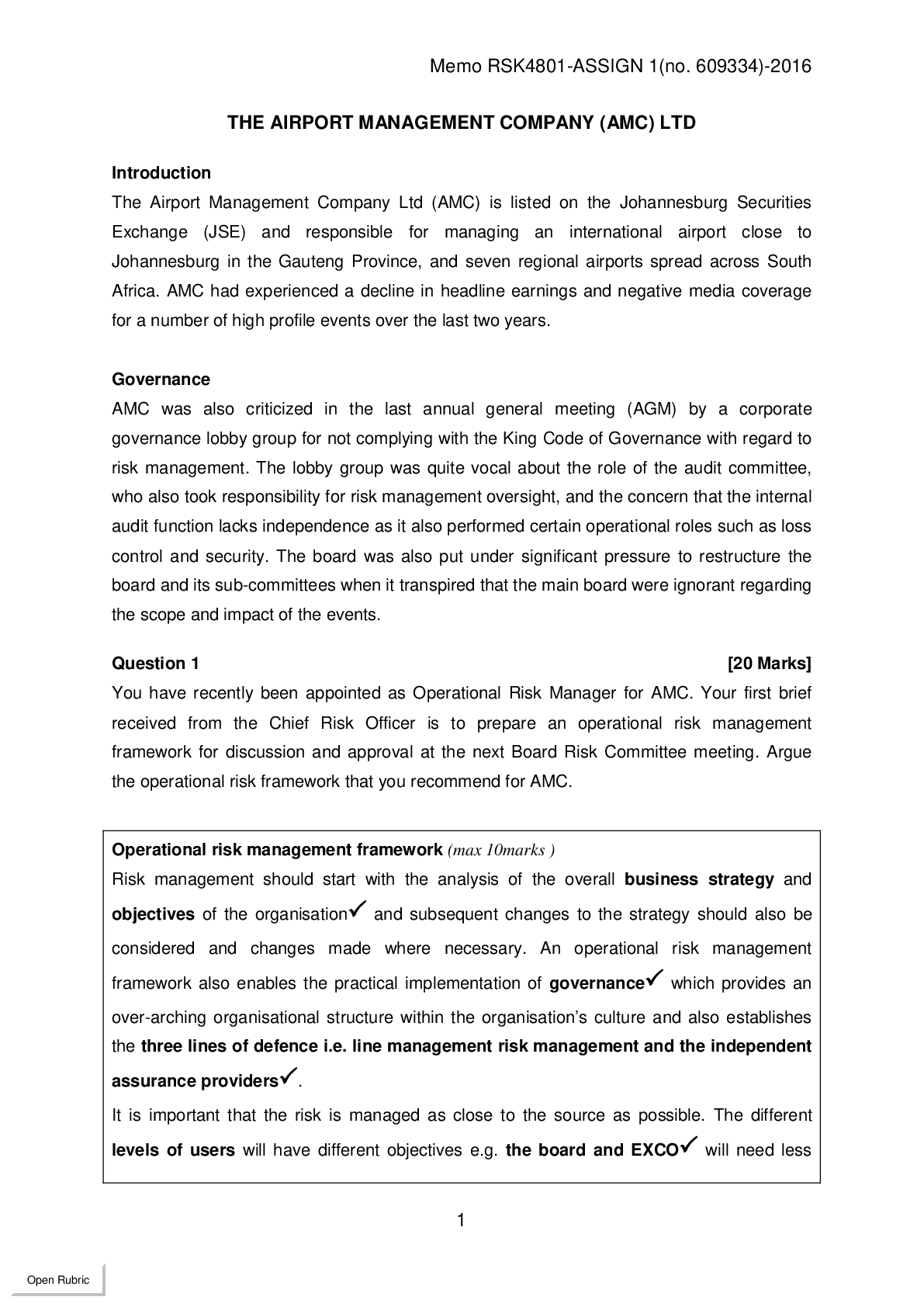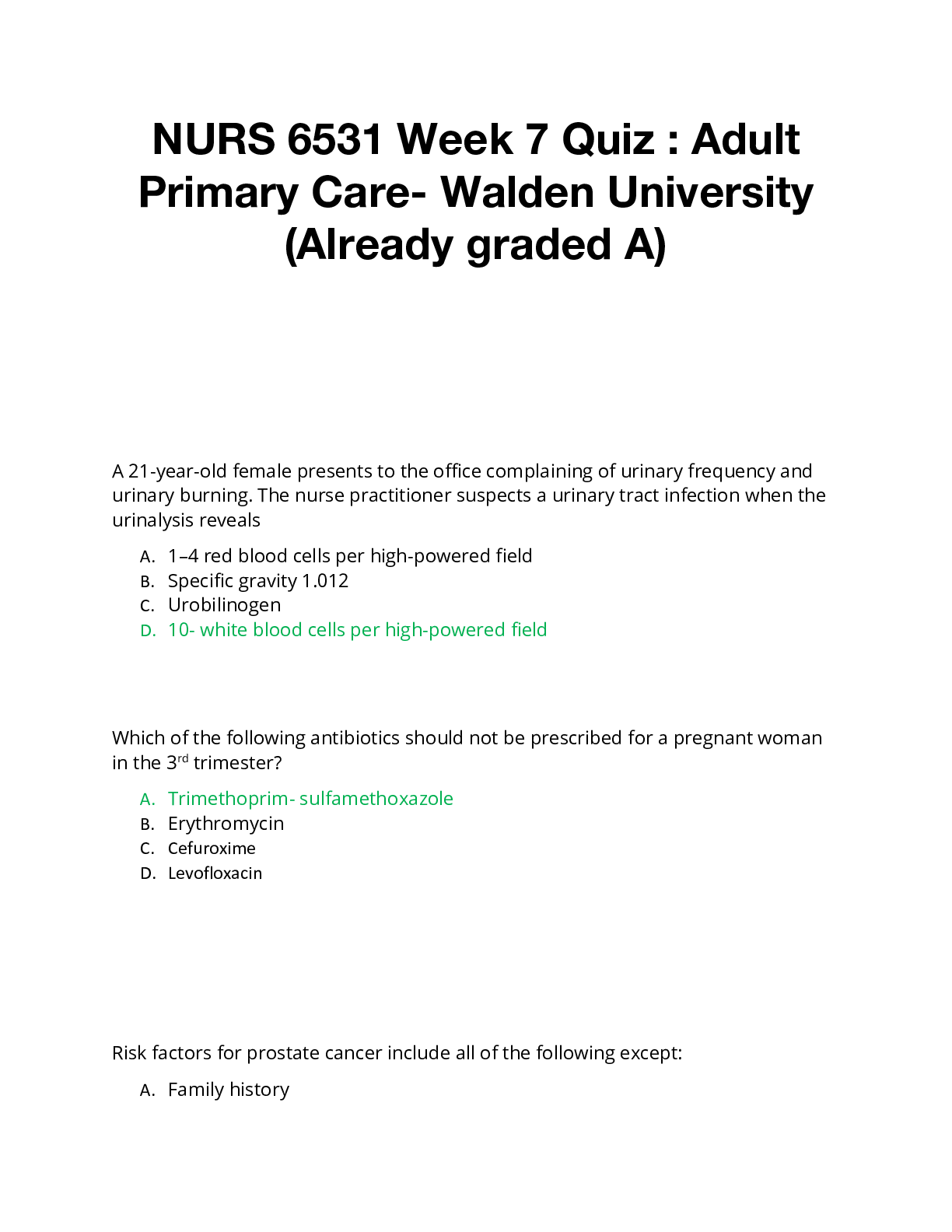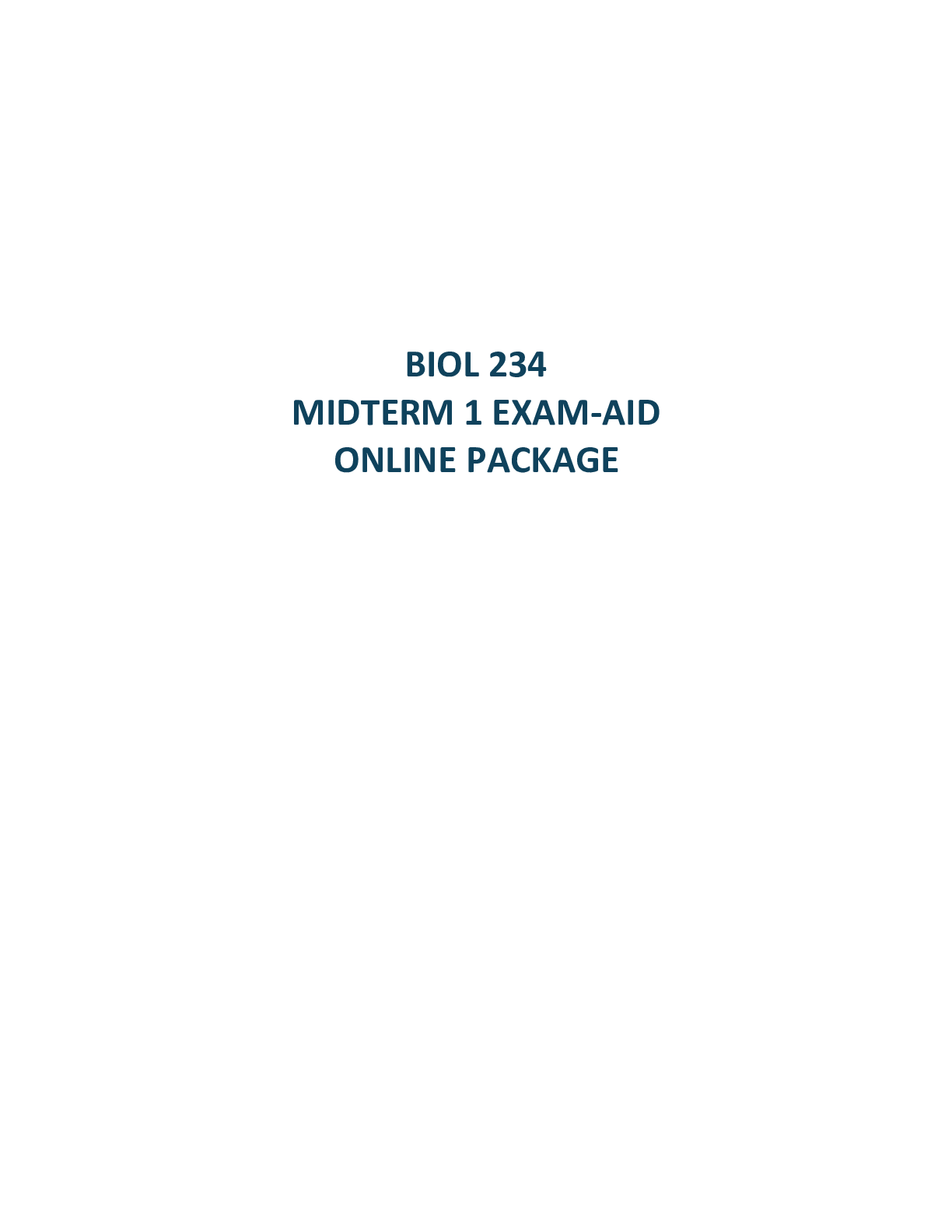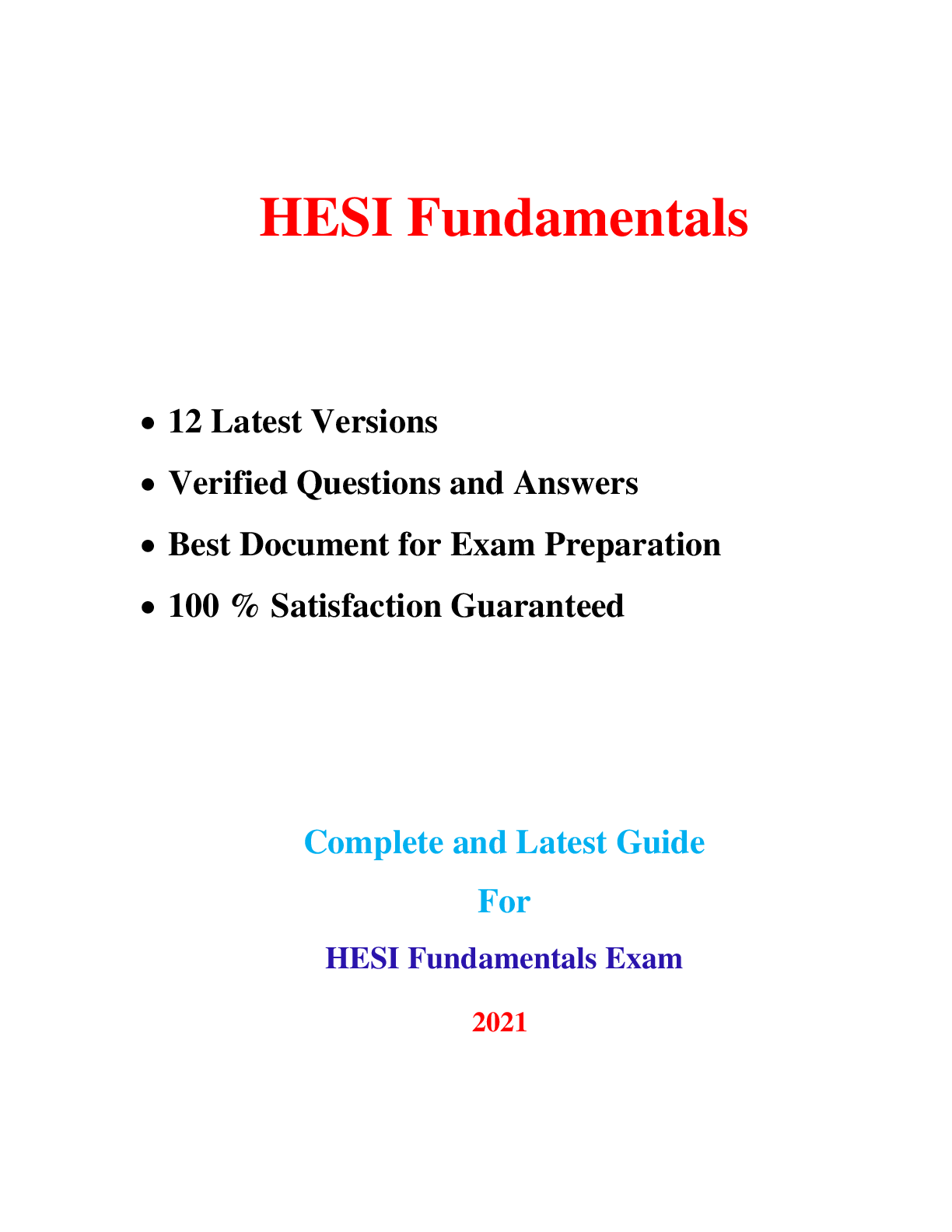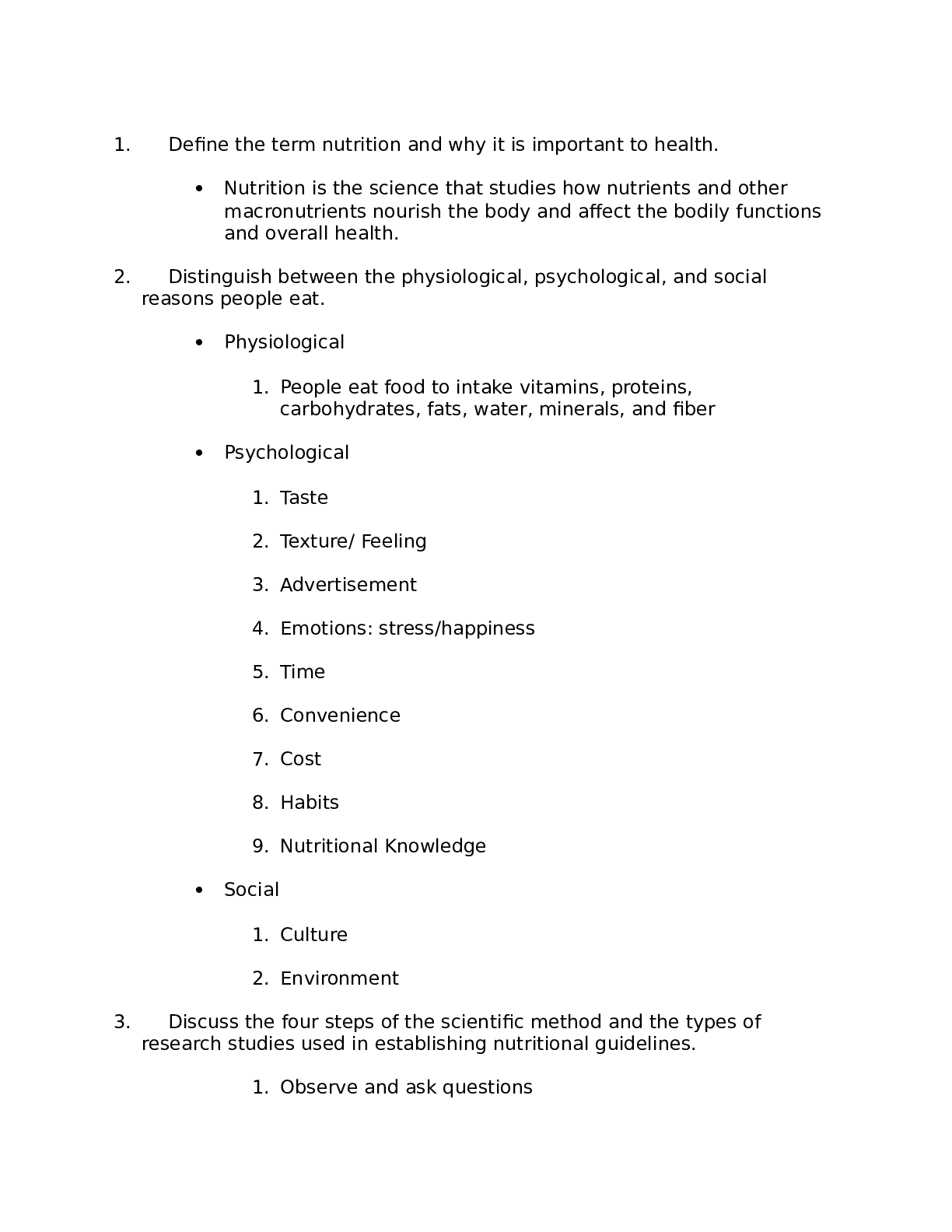*NURSING > QUESTIONS & ANSWERS > PALS Self-Assessment - ECG Rhythm Identification Answer Sheet (All)
PALS Self-Assessment - ECG Rhythm Identification Answer Sheet
Document Content and Description Below
Pediatric Rhythms (core PALS rhythms A to H; non-core rhythms I to M): A. Normal sinus rhythm B. Sinus tachycardia C. Sinus bradycardia D. Supraventricular tachycardia (SVT) E. Wide-complex tachy... cardia; presumed ventricular tachycardia (monomorphic) F. Ventricular fibrillation (VF) G. Asystole H. Pulseless electrical activity (PEA) I. SVT converting to sinus rhythm with adenosine administration J. Wide-complex tachycardia (in a child with known aberrant intraventricular conduction; this is SVT with aberrant conduction) K. First-degree AV block L. Torsades de pointes (polymorphic ventricular tachycardia) M. VF converted to organized rhythm after successful shock delivery (defibrillation) Rhythms 1 to 8: Core PALS Rhythms (select single best answer from rhythms A to H) Rhythm 1 (clinical clue: heart rate 214/min) Pediatric ECG tip: Ventricular tachycardia is a sustained series of wide QRS complexes (ie, ventricular depolarizations) typically at a rate of at least 120/min. This VT can be further classified as monomorphic because all complexes have the same appearance. If this rhythm is observed in a child with no history of aberrant intraventricular conduction and no aberrant conduction apparent on 12-lead ECG, the rhythm should be presumed to be ventricular tachycardia. For further information: see the PALS Provider Manual Chapter 6: Recognition and Management of Bradyarrhythmias and Tachyarrhythmias and Chapter 7: Recognition and Management of Cardiac Arrest. Rhythm 2 (clinical clues: heart rate 44/min; no detectable pulses) Correct answer is H: Pulseless electrical activity (PEA) Pediatric ECG tip: In the absence of detectable pulses, this organized rhythm is one of the cardiac arrest rhythms—Pulseless electrical activity (PEA) (PEA). It is treated using the asystole/PEA portion of the PALS Pulseless Arrest algorithm. This particular rhythm may be described as an idioventricular escape rhythm (an escape rhythm originating from a slow ventricular pacemaker during periods of significant sinus bradycardia or high-grade AV block). It is characterized by wide QRS complexes, and it is often seen in the setting of a severely hypoxic-ischemic myocardium. For further information: see the PALS Provider Manual Chapter 6: Recognition and Management of Bradyarrhythmias and Tachyarrhythmias. Rhythm 3 (clinical clues: age 8 years; heart rate 50/min) Correct answer is C: Sinus bradycardia. Pediatric ECG tip: Sinus bradycardia is characterized by a sinus rhythm with a rate that is slower than normal for the patient’s age. P waves and QRS complexes are usually normal in appearance; the QRS is narrow. For further information: see the PALS Provider Manual Chapter 6: Recognition and Management of Bradyarrhythmias and Tachyarrhythmias. Rhythm 4 (clinical clue: no detectable pulses) Pediatric ECG tip: Asystole is the absence of ventricular depolarization (ie, cardiac standstill). It may be preceded by an agonal (usually wide-complex) bradyarrhythmia (see an example of this in Rhythm 2). When you observe this rhythm in a child who is unresponsive, apneic, and pulseless, you should begin compressions and ventilations (CPR) immediately. Of course, if you are uncertain whether the rhythm is asystole, confirm the flat-line rhythm in 2 perpendicular leads but do not delay CPR for an unresponsive, apneic child. For further information: see the PALS Provider Manual Chapter 7: Recognition and Management of Cardiac Arrest. Rhythm 5 (clinical clue: no consistent heart rate detected; no detectable pulses) Pediatric ECG tip: Ventricular fibrillation (VF) is characterized by a rapid, irregular waveform of varying size and configuration. VF begins as a coarse, irregular deflection and then deteriorates to a fine, irregular pattern. If no CPR and no shocks are provided, this rhythm will eventually progress to asystole. For further information: see the PALS Provider Manual Chapter 7: Recognition and Management of Cardiac Arrest. Rhythm 6 (clinical clues: age 3 years; heart rate 188/min) Pediatric ECG tip: Sinus tachycardia is characterized by a normal sequence of impulse formation and conduction with a rate faster than normal for the patient’s age. P waves precede each QRS complex; the QRS is typically narrow. For further information: see the PALS Provider Manual Chapter 6: Recognition and Management of Bradyarrhythmias and Tachyarrhythmias. Rhythm 7 (clinical clue: heart rate 300/min) [Show More]
Last updated: 2 years ago
Preview 1 out of 38 pages

Buy this document to get the full access instantly
Instant Download Access after purchase
Buy NowInstant download
We Accept:

Reviews( 0 )
$10.50
Can't find what you want? Try our AI powered Search
Document information
Connected school, study & course
About the document
Uploaded On
Aug 24, 2022
Number of pages
38
Written in
Additional information
This document has been written for:
Uploaded
Aug 24, 2022
Downloads
0
Views
72

